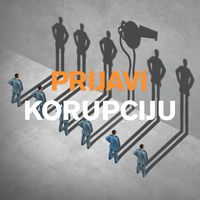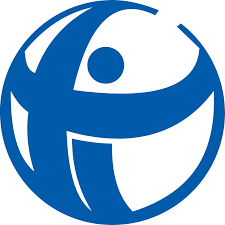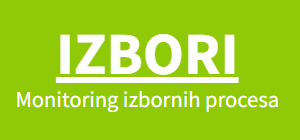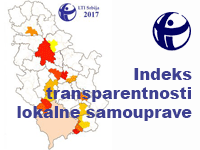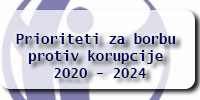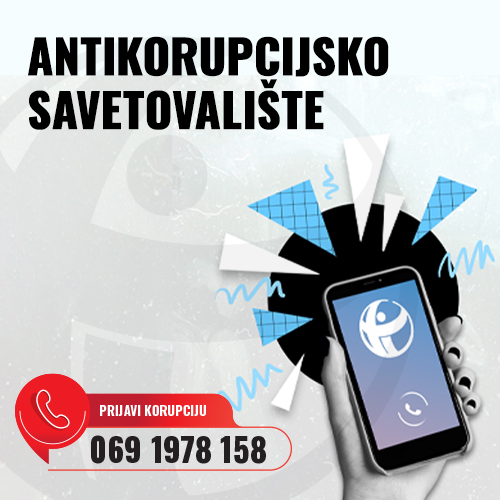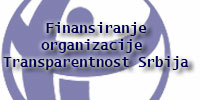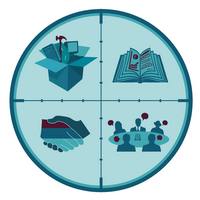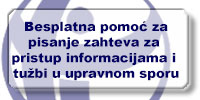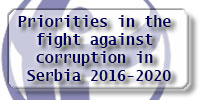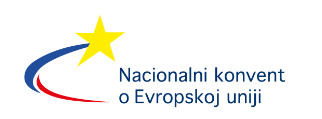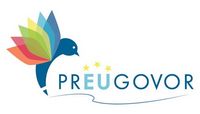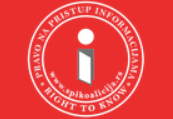Financing of the campaign for the presidential elections
First Analysis
Reports
Official reports on the financing of the campaign for the presidential elections confirm the findings of the apparent dominance of the candidates of the ruling party in relation to all others, which are a consequence of the legal rules on the distribution of funds from the budget for campaign financing, as well as the absence of limits on campaign expenses. As much as 73% of the total reported expenses refer to the campaign for Aleksandar Vučić and only 27% for the six other candidates. The trend of pronounced dominance and concentration of financial power of the candidates of the ruling party was thus further strengthened compared to the previous presidential elections, from 2017, when 40% of the reported expenses went to the other candidates.
Of the eight participants in the presidential elections, only the group of citizens who proposed Miša Vacić did not submit either the final or the preliminary financial report. The Agency for the Prevention of Corruption has not yet announced whether it initiated misdemeanour proceedings or pressed charges for a criminal offence – which happens when information about the funding source and the amount of campaign expenses are intentionally hidden.
Comparison with 2017
While the reported campaign expenses for Vučić this year were about 11% lower than five years ago, the investments of his rivals were halved compared to 2017 because then they were worth close to 520 million dinars, and now only 258,726,995 dinars. Moreover, all opposition presidential candidates have now spent less money than only one (Vuk Jeremić) spent five years ago.
The winning campaign was financed with 645 million from the budget and another 59 million transferred by SNS from the party's permanent account, which also came almost entirely from budget grants for the regular work of this party. Five years ago, in addition to the campaign financing budget, SNS used as much as 274.5 million dinars from 6,940 citizens' payments (mostly 40,000 each), the legality of which was never checked.
Among the main categories, the most considerable decrease was recorded in "promotional material" and significant in advertising and public events, while "other expenses" increased. It should be borne in mind that, unlike in 2017, parliamentary elections take place this time simultaneously and that there is likely an overflow of expenses between various campaigns.
Types of expenses
Almost 2/3 of all expenses went to advertising, promotional materials, and public events, 10% each, and "other costs" with a high 17%. However, half of those other costs can be attributed to advertising, as they relate to the services of marketing agencies.
Monitoring observations
TV advertising
Advertising on TV stations is still dominant, accounting for over half of all reported expenditures (521 million dinars).
When comparing the reported costs with the findings of the monitoring conducted by Transparency Serbia, it can be concluded that the most significant part of the observed costs of TV advertising was reported. There are also some important differences.
In TS monitoring, the Dveri campaign was classified as related to the parliamentary elections, and those expenses were found in the report of this party for the presidential elections, in almost identical amounts, when it comes to TV Prva, B92 and K1. Dveri also reports the cost on Pink, where we did not see it, but not on TV Happy. Advertising on TV K1 (worth RSD 10.6 million according to our estimation) was not reported at all.
With candidate Miloš Jovanović, there is a significant difference only in advertising on TV Prva, for about two million dinars.
With the Ponoš candidate, there are no significant differences between the report and the assessment.
The most significant differences occur with the most expensive campaign, which was run for Aleksandar Vučić. About 10% more costs were reported compared to the TS observation. That difference was largely due to advertising on TV Pink, where RSD 32 million more than our estimate was reported, and on TV Prva (as much as RSD 40 million more was reported). Conversely, on TV Happy the reported cost was twice as low (RSD 24 million) as expected.
There are two possible reasons for these discrepancies. When it comes to TV Happy, it is the only TV station that has not published a list of discounts, but only price lists per second. TS based its assessment on the last published discounts of this TV station for the elections (from 2016) when they amounted to a maximum of 17%. In reality, SNS received a 40% discount for advertising on this TV station. The excess reported expenditures of SNS on TV Pink and TV Prva are probably related to leased time slots, which were not included in our evaluation of the TV campaign value. Namely, there were no special price lists for the leased dates. If the value of the leased time slots of this party was to be calculated according to the price lists for advertisements, it would be huge - as much as 97.5 million on TV Pink and 24.5 million on TV Prva, with all discounts. The actual value is, of course, significantly lower (about one-fifth of those amounts).[1] Although there is a column for leased dates in the report form, it remained empty, so the dilemma remains whether they are included in the submitted financial report for the presidential elections. By the way, leased time slots were also observed on TV Happy for the coalition NADA and SPS-JS.[2]
Billboards
When it comes to billboards, SNS reported one-third of the costs it incurred according to the TS estimate (that is, about RSD 53 million less), and the UPS coalition only one-quarter (RSD 4,5 million less). On the other hand, the reported cost of the NADA coalition is almost twice as high as expected, and only "Moramo" colation has the match. The probable reason for these large deviations is the arbitrariness that the legislator allowed in cases when the one billboard can refer to two or three types of election campaigns – and when, in practice, the parties themselves choose how to present the expenses instead of dividing it evenly among all campaign types.
None of the financial reports for the presidential election explicitly state the cost of advertising on Facebook. They may be covered in other sections (there is no separate one related to social networks) and should be checked.
Preliminary reports
The preliminary reports on the financing of the presidential campaign, which should show the situation up to 15 days before the elections, reported a total of 107.6 million dinars of expenses. As much as 963 million was reported for the entire campaign. It is implausible that the campaign in the last 15 days cost as much as 855 million dinars, and it is far more likely that the preliminary reports did not contain data on all expenses incurred until 19 March 2022. This showed what TS had been warning about all along. - that the concept of preliminary reports, as set out in the ZFPA, will not ensure an adequate level of transparency of campaign financing while it lasts. Overall, the preliminary reports for the presidential elections contain only 11.17% of campaign expenses.
The level of transparency among individual presidential candidates varies significantly. Until 19 March, more than half of the total presidential campaign expenses were reported for candidates Boško Obradović and Biljana Stojković. For the most expensive campaign, that of Aleksandar Vučić, the share of expenses until 19 March is less than seven per cent of the total value of the campaign. For the candidate of Zavetnici, the percentage was utterly negligible.
[1] Leased slot on TV Pink on March 31, lasting one hour and 53 minutes, and the slot on TV Prva on March 30, lasted over 45 minutes.
[2] Duration of 29.5 and 36.5 minutes. Their value, according to the full advertising prices, would be as much as 20 or 23.5 million dinars, but in reality the price was probably eight to 10 times lower.





